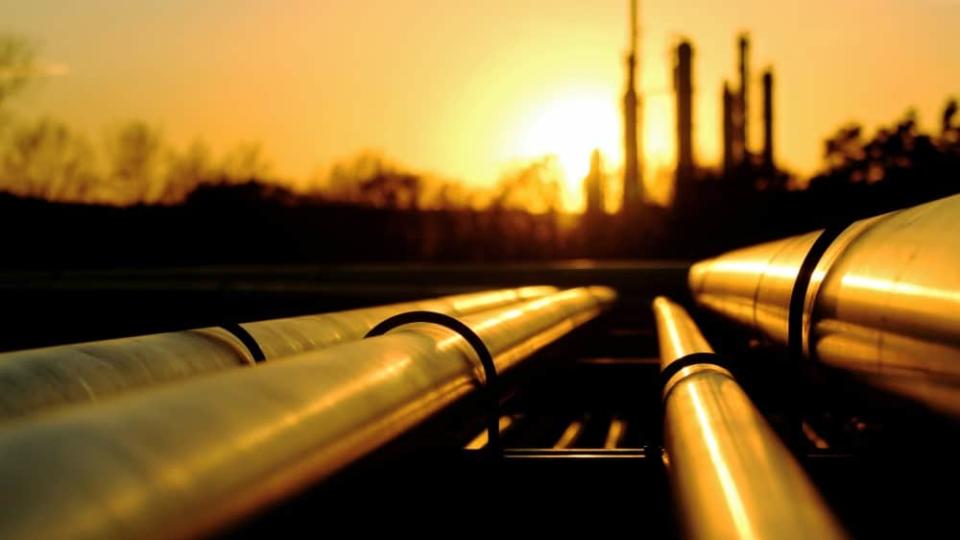Is Enbridge Stock a Buy for its Big Dividend?

Written by Robin Brown at The Motley Fool Canada
Enbridge (TSX:ENB) stock is yielding 8.23% today. Other than the pandemic market crash in 2020, that is the highest Enbridge’s dividend yield has been in 10 years. While that yield might look juicy for passive income right now, Canadian investors need to be cautious.
Enbridge has great assets, but investors need to be cautious
Enbridge operates a massive portfolio of crucial energy assets. It has one of the largest oil liquids networks in North America. It moves about 30% of the oil produced in North America. Likewise, it operates the largest natural gas utility network on the continent. It complements these with a diverse mix of storage, processing, LNG, export, and renewable assets.
Despite this, Enbridge has a very spotty history of capital allocation and balance sheet management. While it has significantly grown over the decade, it has done so by increasing debt and massively diluting shareholders on a per-share basis.
Debt and equity have steadily risen at Enbridge
Over the past 10 years, its net debt has ballooned by 212% to over $78 billion. While its net debt-to-EBITDA (earnings before interest, taxes, depreciation, and amortization) ratio has come down over that period, it remains very high at 5.5 times. When you subtract its capital expenditures, net debt-to-EBITDA sits at 8.4 times, which remains extremely high.
Its quarterly interest expense in June was up 12% to $883 million from the second quarter 2022. Interest rates are rising, so the cost of its variable rate debt has significantly increased. Likewise, as debt matures, its bonds turn over at significantly higher interest rates.
In the same vein, its share count has risen from 830 million to 2.023 billion. That is a 143% increase. It has persistently issued equity to help finance its growth. However, that has come at the cost of diluting shareholders. The more shares it issues, the more dividends it must pay. That puts further pressure on its balance sheet.
A bad deal may be backfilling weakness in its core pipeline business
The company just announced a massive acquisition. It is acquiring a portfolio of three large American natural gas utilities for US$9.4 billion of cash and US$4.6 billion of acquired debt. There are a few reasons this deal doesn’t look like a win.
Firstly, it may be a clue that Enbridge’s core liquid oil pipelines are facing some competitive weakness. The Trans Mountain Pipeline is set to come online next year. As a result, Enbridge has had to make rate concessions when renegotiating its toll agreements. Enbridge may be making this acquisition to backfill some of the lost returns from its mainline.
Secondly, Enbridge is paying an elevated price for this portfolio. It is paying 16.5 times earnings, which is above Enbridge’s current trading valuation of 15.5 times.
To finance the deal, Enbridge issued $4.6 billion of equity (about 103 million shares). That deal was approximately 5% dilutive to shareholders. It is issuing equity at a value that is below that of the acquired company, which suggests it will be challenged to make this deal accretive on a per-share basis.
Thirdly, Enbridge will be taking on additional debt to finance this deal. The company already has significant debt to service. In the near term, this deal will put pressure on its balance sheet.
Poor capital allocation and poor returns
Overall, this just speaks to poor capital allocation. Owning a stock that grows for the sake of getting bigger, rather than becoming more profitable on a per-share basis, is never a formula for good long-term returns. The proof is in its lacklustre returns.
Over the past 10 years, Enbridge shareholders have earned a -2% stock return. When adding in dividends, its annual total return is only 5% annually. That still underperformed the S&P/TSX Composite Index, which delivered 7.5% annual total returns over that same period.
The post Is Enbridge Stock a Buy for its Big Dividend? appeared first on The Motley Fool Canada.
Should You Invest $1,000 In Enbridge?
Before you consider Enbridge, you'll want to hear this.
Our market-beating analyst team just revealed what they believe are the 5 best stocks for investors to buy in October 2023... and Enbridge wasn't on the list.
The online investing service they've run for nearly a decade, Motley Fool Stock Advisor Canada, is beating the TSX by 25 percentage points. And right now, they think there are 5 stocks that are better buys.
See the 5 Stocks * Returns as of 10/10/23
More reading
Fool contributor Robin Brown has no position in any of the stocks mentioned. The Motley Fool recommends Enbridge. The Motley Fool has a disclosure policy.
2023

 Yahoo Finance
Yahoo Finance 